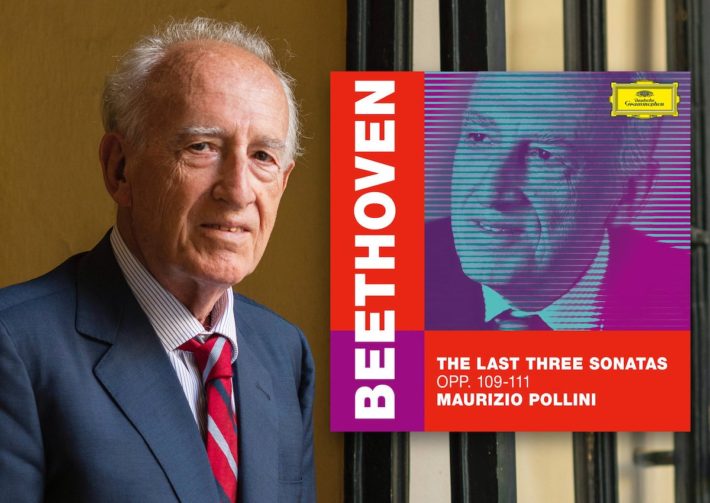Image: Cosimo Filippini
Deutsche Grammophon had one debt in Maurizio Pollini’s Beethoven cycle, released in 2014 and contained recordings from the late 1970s to the 2010s. The late piano sonatas, no 28-32 were still in analog recording, when some of the sonatas were re-recorded in digital before the release of the full cycle. There was a sort of general consensus (if such is possible in the world of classical music reviews), that there is simply no need to re-record a few of the most distinguished Beethoven performances in the catalog, and especially not the “Hammerklavier” and Op. 111. But the hype around Beethoven’s 250 celebrations apparently did the trick, and here we have a new, live and digital performances of the last three Piano Sonatas.
This is where you’d find most of the differences between the analog and digital performances; Like many of Pollini’s remakes in the past 20 years, this is a live recital, captured at the Herkulessaal in Munich, and there is no attempt to hide it. The sound is very similar to what one hears when sitting in a relatively resonant hall. Many classical music listeners would prefer a more detailed recording, but won’t deny the reliable “real life” listening experience. Taking into consideration that the original 1970’s recording was on the dry side, almost harsh, this is worlds apart. The acoustics may also explain the sometimes loud phrasing, even in soft passages or when Beethoven specifically asks for piano or una corda. The fast figurations in few of the variations of Op. 109 and Op. 111 sound more atmospheric than deliberate (not always a bad thing), and the trills in the end of both Sonatas are executed slower in order to sound even.
Related Classical Music Reviews
- Review: Beethoven – Complete Piano Sonatas – Igor Levit
- Review: Beethoven – Complete Piano Sonatas – Fazil Say
- Review: Maurizio Pollini Plays Chopin Op. 55-58 (2019)
As to the general attitude towards these works, not much has changed – Pollini’s Beethoven is noble, forceful and forward-leaning. The tempi on all movements are similar if slightly faster, most notably in the second movement of Op. 111, which is given a more rushed execution in the faster variations. The directness of this pianism is most attractive in the slower passages, as in Op. 110’s “Klagender Gesang” or the opening variations themes of Op. 109 and Op. 111. Pollini’s desire to project to the back of the hall, perhaps, makes these segments more outspoken than his older version.
Ultimately, with Pollini you know what to expect, and he usually fills these expectations. This could comfortably fill the missing piece in his Beethoven Piano Sonatas cycle (now the only leftover are sonatas No. 28 and 29), though I wouldn’t want to live without the original recording from the 1970s, nor without other successful accounts of these masterpieces – Schnabel, Solomon and Arrau, and in modern recordings – Goode, Levit and Schiff.

Beethoven – Piano Sonatas No. 30-32, Op. 109-111
Maurizio Pollini – Piano
Deutsche Grammophon, CD 0289 483 8250 7
Beethoven Late Piano Sonatas – Recommended Comparisons
Read more classical music reviews or visit The Classic Review Amazon store
Follow Us and Comment:
Get our periodic classical music newsletter with our recent reviews, news and beginners guides.
We respect your privacy.









